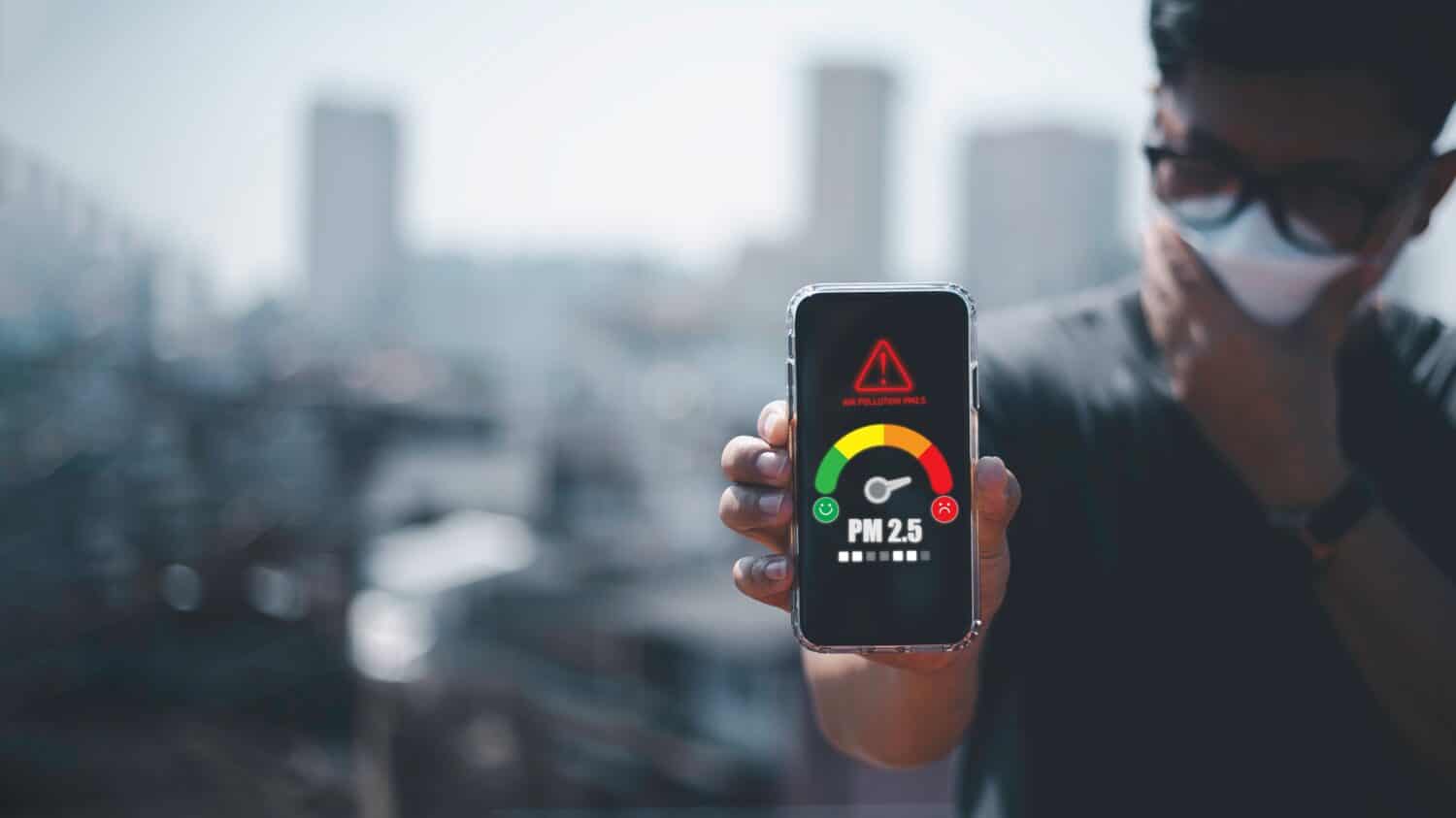The quality of the air we breathe is very important to our health. Yet, in an increasingly urbanized world, we often lose access to clean air that can nourish our bodies. The Air Quality Index (AQI) is a valuable tool that measures and communicates the quality of the air in a particular area. It also provides vital information about the level of pollutants present in the atmosphere and helps individuals make informed decisions to protect their health.
Understanding the Air Quality Index (AQI)
The Air Quality Index (AQI) is a standardized scale used to assess and report the quality of air in a specific region. It takes into account several major air pollutants found in air, including particulate matter (PM2.5 and PM10), nitrogen dioxide, sulfur dioxide, carbon monoxide, and ozone. The AQI provides a numerical value and a corresponding description that reflects the level of air pollution and its potential health impacts.

The AQI indicates the levels of pollution in the air and categorizes the levels of safety when it comes to breathing in the air.
©iStock.com/pro6*7
Interpreting AQI Categories
The AQI categories are typically divided into six levels, each indicating a different level of air quality. These categories range from “Good” to “Hazardous.”
Good (0-50)
When the AQI falls within this range, it indicates that the air quality is satisfactory, and the air poses little to no risk to human health. This level is characterized by minimal pollutants and is the ideal target for everyone.
Moderate (51-100)
The moderate category suggests a moderate level of air pollution. While it may not be harmful to the general population, individuals with respiratory issues, such as asthma or allergies, might experience discomfort. It is advisable to limit prolonged exposure to outdoor activities during this period.
Unhealthy for Sensitive Groups (101-150)
At this level, the air quality becomes unhealthy for sensitive groups. Individuals with pre-existing respiratory or cardiovascular conditions, children, and the elderly should take precautions and minimize outdoor exposure. The pollutants present in the air may cause respiratory symptoms or exacerbate existing health conditions.
Unhealthy (151-200)
The unhealthy category indicates that the general population may experience adverse health effects due to air pollution. Increased respiratory symptoms, such as coughing and wheezing, are possible. It is crucial to reduce outdoor activities, especially for those with respiratory issues.
Very Unhealthy (201-300)
When the AQI reaches this level, the air quality is very unhealthy. People of all age groups, including those without underlying health conditions, may experience respiratory distress and other health problems. It is highly recommended to stay indoors and limit outdoor exposure until the air quality improves.
Hazardous (301+)
The hazardous category is the highest level on the AQI scale, indicating extremely poor air quality. The air pollution at this level poses a severe risk to human health and can lead to immediate and long-term health effects, including respiratory illnesses, cardiovascular problems, and even premature death. Therefore, it is crucial to take extensive measures to reduce exposure and follow local authorities’ guidelines.

It is essential to wear a mask before you go outside into hazardous air quality. Even a little exposure to this quality of air can have negative effects on human health.
©BLACKDAY/Shutterstock.com
Significance of AQI for Health
The AQI plays a significant role in safeguarding public health. Thus, by understanding the air quality in their neighborhoods, individuals can make informed decisions and take necessary precautions. Here are a few reasons why the AQI is vital for health.
AQI in Respiratory Health Protection
The AQI serves as a crucial indicator for individuals with respiratory conditions. Accordingly, people with asthma, allergies, or chronic obstructive pulmonary disease (COPD) can adjust their activities and medications based on air quality information. It helps them minimize the risk of worsening conditions and maintain better control over their health.
Risk Mitigation Through AQI
The AQI allows individuals to assess the level of risk associated with outdoor activities. When the AQI is in the unhealthy range, people can choose to exercise indoors or reschedule their outdoor workouts to reduce exposure to harmful pollutants. This risk mitigation strategy is particularly crucial for vulnerable groups, such as children and the elderly.
Policy Implementation
The AQI provides valuable data to policymakers and environmental agencies. Through monitoring and analyzing air quality trends, authorities can develop and implement measures to reduce pollution levels. This includes enacting stricter emission standards, promoting cleaner technologies, and implementing public health interventions to improve air quality and protect human health.
Public Awareness and Education About AQI
The AQI helps raise public awareness about the importance of clean air and its impact on health. By disseminating air quality information through various platforms, individuals are empowered to make conscious choices that promote their well-being. This awareness can drive individual actions and collective efforts to improve air quality on a larger scale.

People can check the Air Quality Index in their neighborhood through AirNow, a government agency that collects air quality data.
©Borri_Studio/Shutterstock.com
The Air Quality Index (AQI) is an essential tool for understanding and assessing the quality of the air we breathe. By providing a clear and standardized measure of air pollution, the AQI empowers individuals to protect their health and make informed decisions. It is crucial for people to be aware of the AQI categories, interpret them correctly, and take necessary precautions to minimize exposure to harmful pollutants. Ultimately, by prioritizing clean air, we can safeguard our health and contribute to a healthier environment for generations to come.
Thank you for reading! Have some feedback for us? Contact the AZ Animals editorial team.








